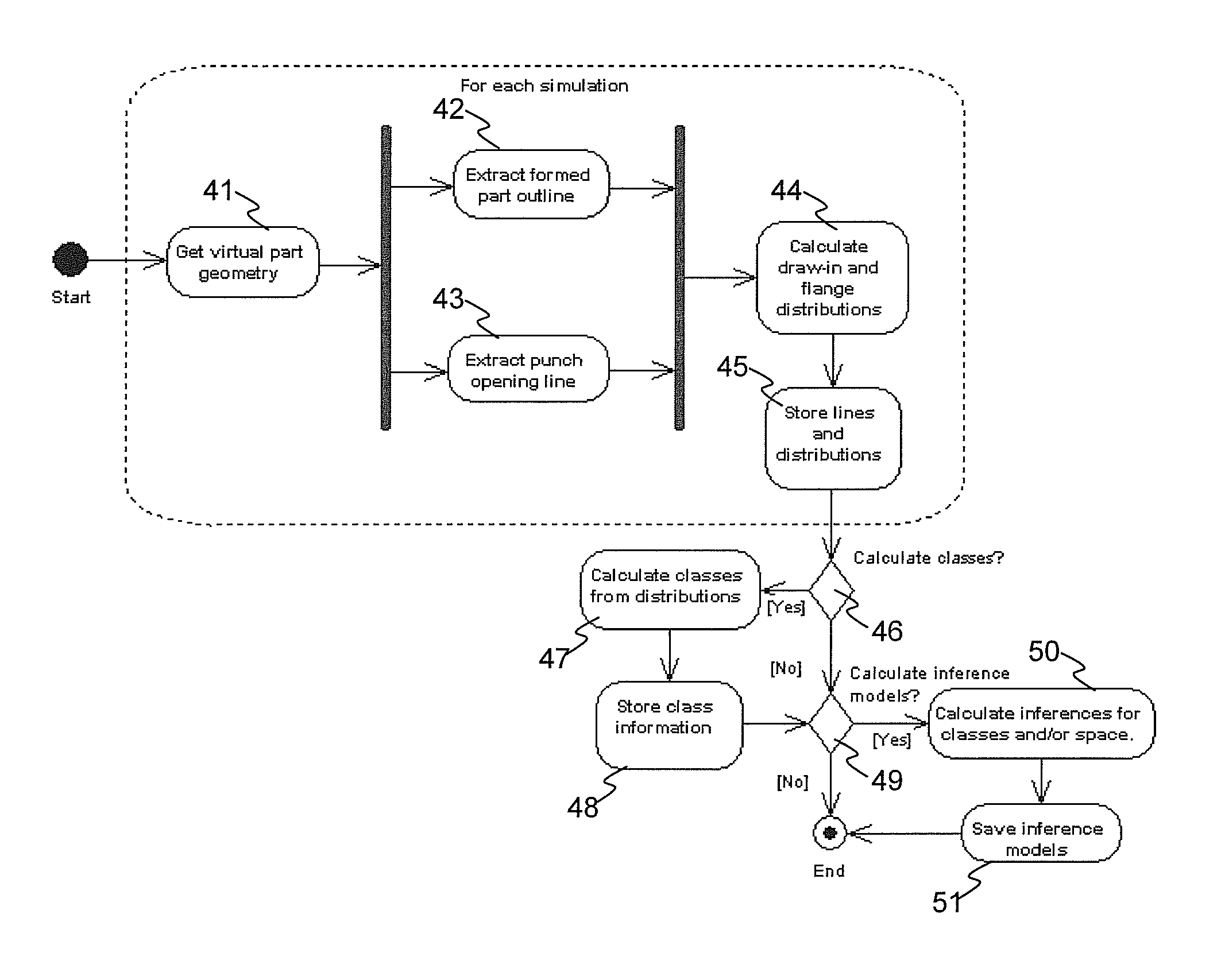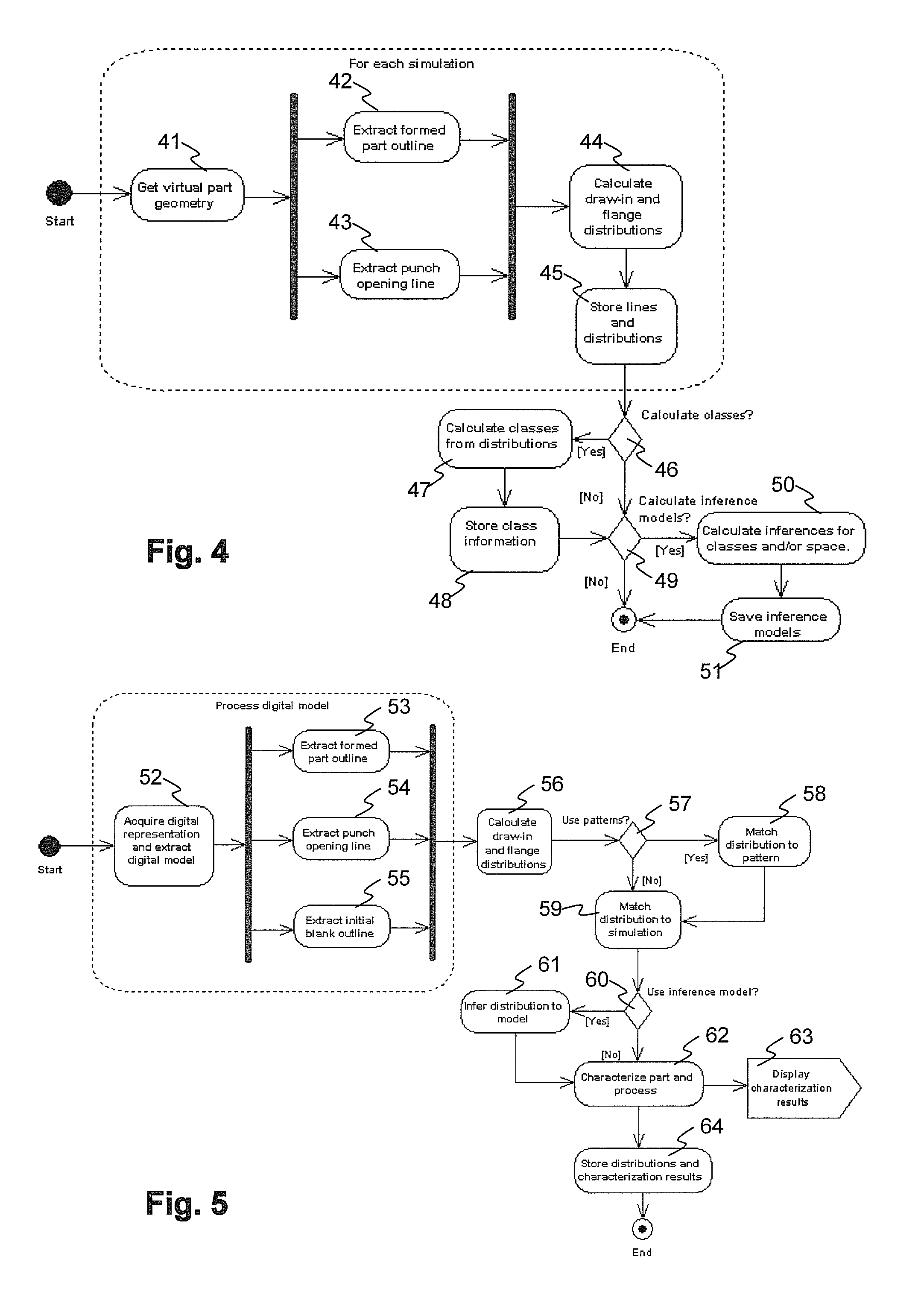Method and computer system for characterizing a sheet metal part
a technology of computer system and sheet metal, applied in the field of forming processes, can solve the problems of inability to guarantee the performance of the simulation results, the cost and time-consuming of trial and error procedures, and the inability to use simulation results, etc., to achieve the effect of improving the online performance of the system and facilitating the online use of the system
- Summary
- Abstract
- Description
- Claims
- Application Information
AI Technical Summary
Benefits of technology
Problems solved by technology
Method used
Image
Examples
Embodiment Construction
[0043]In a preferred embodiment of the invention, a method is used to calculate material flow (for example draw-in and flange distributions) for a set of simulations, identify patterns within the distributions, calculate mappings between draw-in or flange distributions and process parameters and state variables. Further steps are to acquire a digital model of an actual formed part, extract required information to calculate the material flow distribution for the actual part and infer the actual distribution to the virtual distributions. These steps are preferentially implemented by a computer program which is executed on a data processing system. The computer program may have two parts, one for preparing data and one that works online. This separation is not mandatory, but improves the online efficiency. From the inference it is possible to extract the characterisation of the part in terms of state variables and process parameters. This characterisation is, in a further step, used to...
PUM
 Login to View More
Login to View More Abstract
Description
Claims
Application Information
 Login to View More
Login to View More - R&D Engineer
- R&D Manager
- IP Professional
- Industry Leading Data Capabilities
- Powerful AI technology
- Patent DNA Extraction
Browse by: Latest US Patents, China's latest patents, Technical Efficacy Thesaurus, Application Domain, Technology Topic, Popular Technical Reports.
© 2024 PatSnap. All rights reserved.Legal|Privacy policy|Modern Slavery Act Transparency Statement|Sitemap|About US| Contact US: help@patsnap.com










